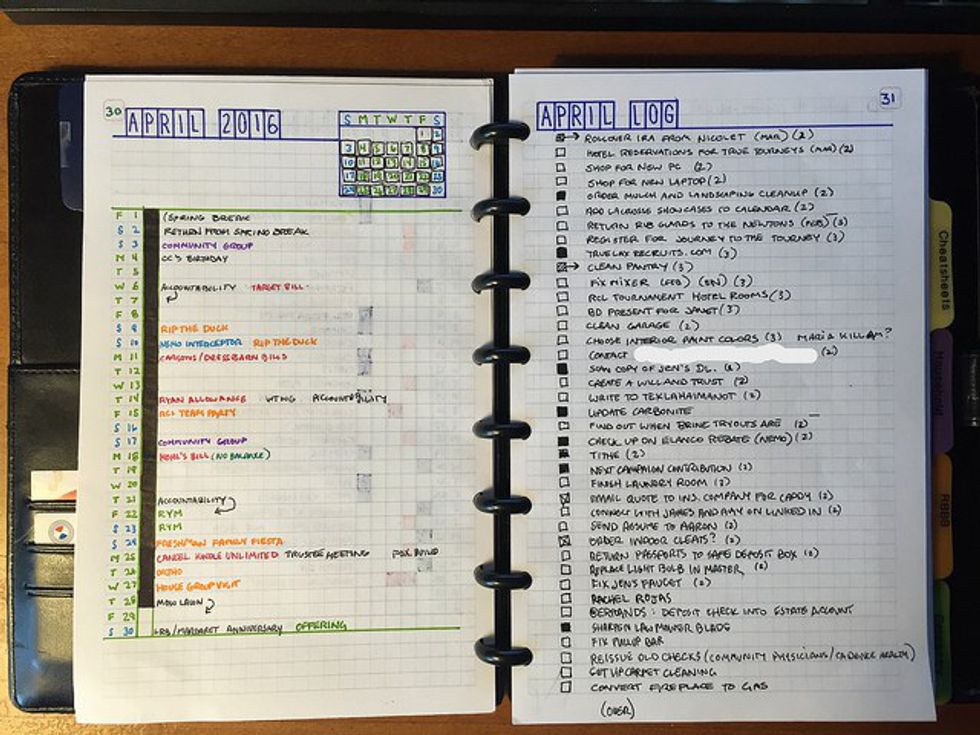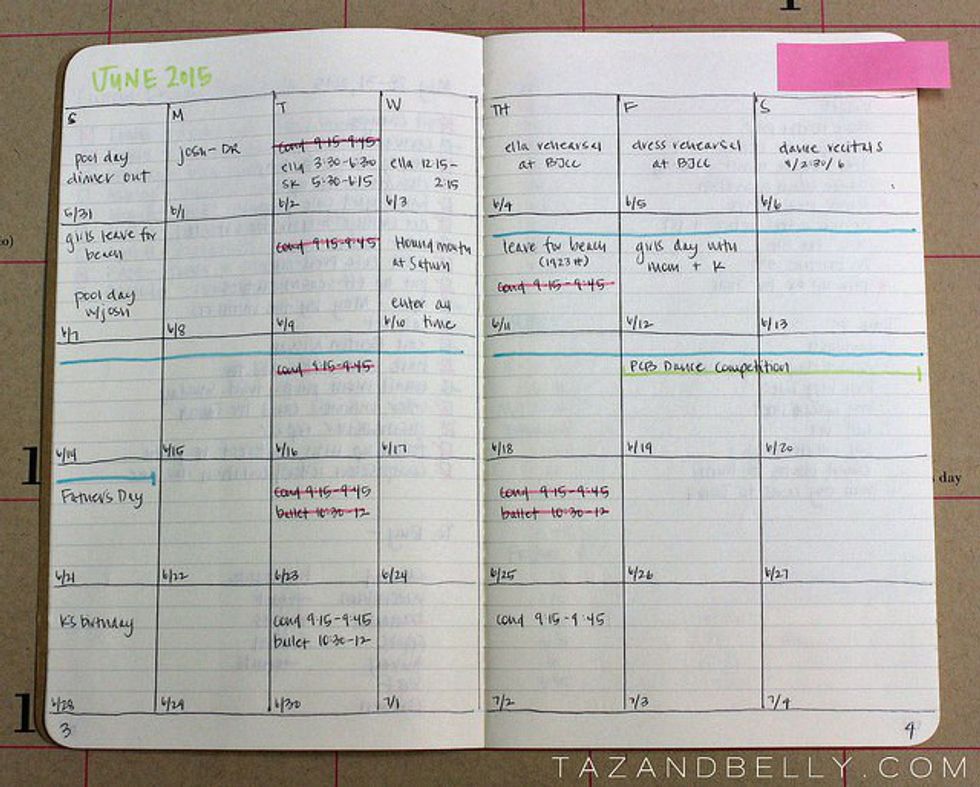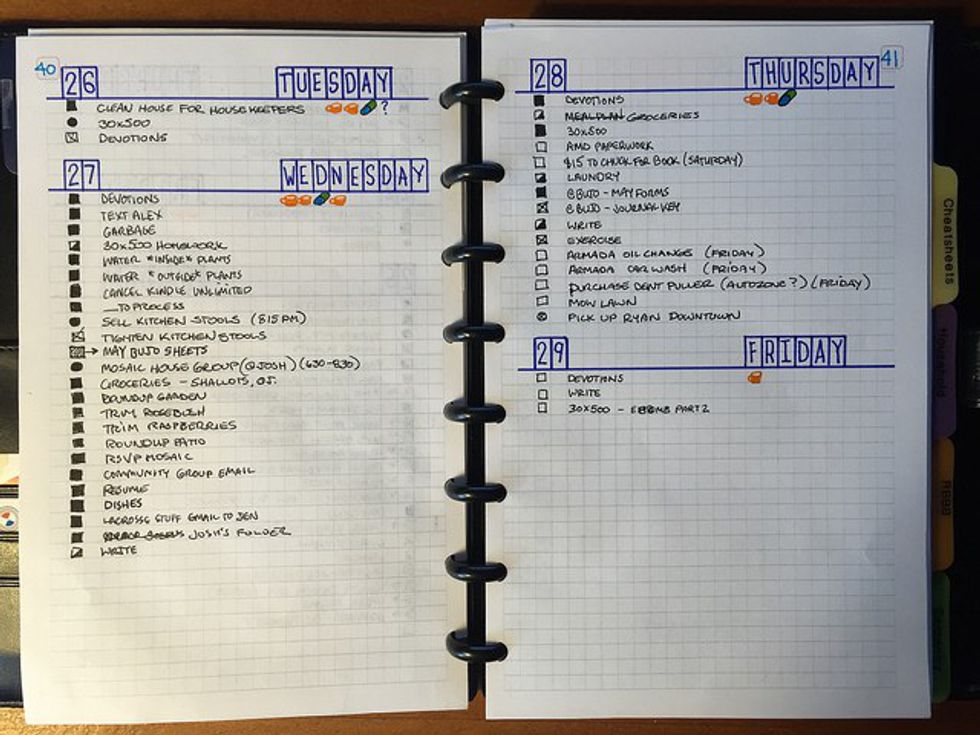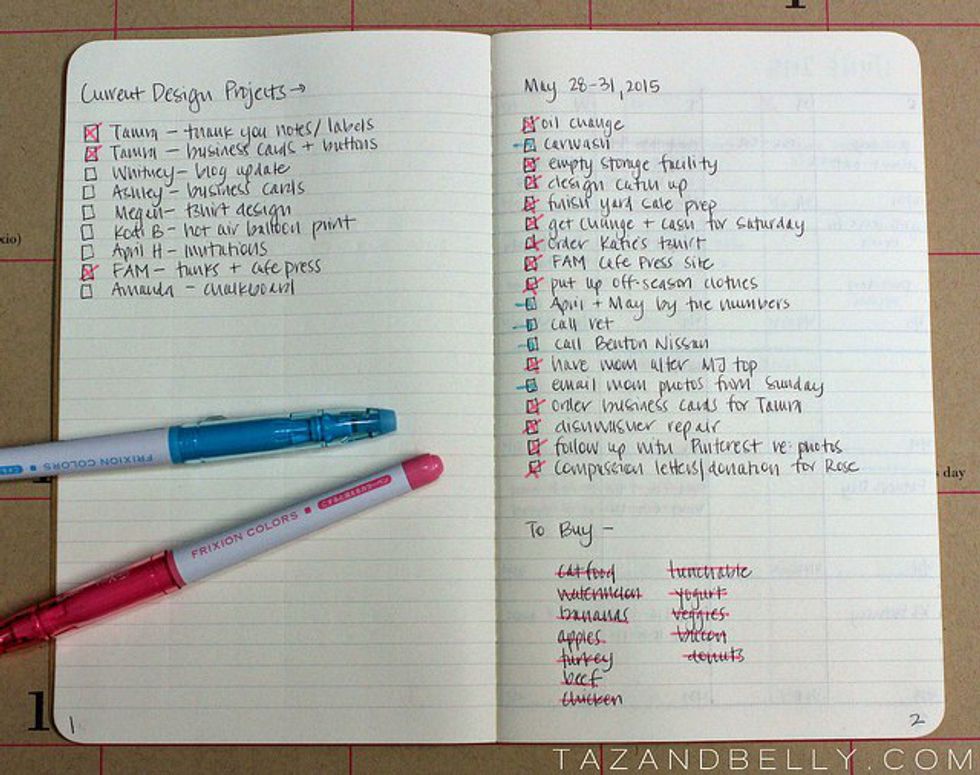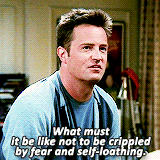People have different ways of trying to organize their life and all of their thoughts. Many people now will use their phones and a variety of apps to keep themselves organized. Notes on phones are always a good way to remember all of those late-night things, but everyone finds their own way to organize themselves. One of the most well-known ways right now is the way of the bullet journal.
Now, the bullet journal is a method that has its own website and instructions on how to do it. But just because they describe the "best way" to do it doesn't mean that you have to do it that way. If you're looking for a way to collect notes and track your to-do lists in a physical place, do so in a way that works best for you.
I've seen plenty of people follow the "normal" way of creating a bullet journal. They'll create the long list of days that is the Monthly Log.
But let's be honest. That doesn't offer a lot of space for some people. It works sometimes, but not all the time. So people have taken their bullet journals and done something much more useful.
Obviously the way that you decide to set up your month is up to you. The most important part of creating the page is that you can track your monthly activities and schedule.
The next important detail is the fact that you can now track down to the week or the day level. Obviously a lot of people are going to use the day-to-day pages that can look like a long list of items with check boxes and maybe a few other symbols to show appointments, events, or even notes.
This is the part where you can add a lot more customization. The example above tracks their medication as well as the number of cups of coffee that they've had. But people track all sorts of things in their journals. In fact, it's suggested that you use some pages for lists that aren't just day to day tasks.
You can use it track projects or create packing lists. You create an index at the beginning of the book that you can use to keep track of everything that you're putting in the following pages. If you make a page of collected notes from various days, you'll be able to find it easily from the beginning of the book. Of course, there are so many different ways to use this notebook that the bare basic design of it is great for anyone that wants to use it.
Most websites suggest a graph paper- or dot paper-style journal to do it with. Many people will suggest using something not too big so you can keep it with you in a purse or bag, but you should really be doing what you feel comfortable with.
Right now, my current "bullet journal" is in a binder and made of loose-leaf graph paper. This means that I can rearrange the pages as much as I want and not worry about the space that a certain page will take. I've been using small sticky notes to keep track of where certain pages are, but it's been helpful to keep me on track for not only my school projects, but all of my personal ones.
But just because I'm turning towards a physical tracker doesn't mean that I'm getting rid of the apps on my phone. I use them in conjunction with my bullet journal. My phone apps keep track of the daily tasks that I want to complete so that I can mark them off on the go. When I sit down to write or do something, I'll take a few minutes to reconcile the two lists.
Maybe having a bullet journal is a little bit more effort than some people want to take out of their day, but it's been a really good way of keeping track of my life.


